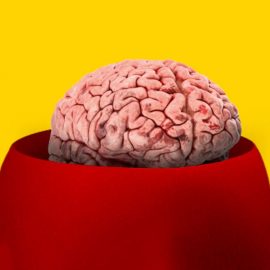
What exactly went on in the minds of our ancestors before modern consciousness emerged? How did ancient humans make decisions without the self-awareness we take for granted today?
In The Origin of Consciousness in the Breakdown of the Bicameral Mind, Julian Jaynes presents a theory about human cognition before consciousness. He proposes that our ancestors operated with a bicameral mentality, where decisions came as auditory hallucinations.
Keep reading to discover how Jaynes believes this ancient mental organization worked.
Bicameral Mentality
Jaynes explains how pre-conscious humans thought and behaved. The second core idea of his theory describes how the bicameral mind operated. According to Jaynes, this ancient form of cognition was fundamentally different from our modern conscious awareness. Rather than experiencing themselves as individuals making conscious choices, people with bicameral mentality received guidance through what they perceived as auditory hallucinations—voices they typically interpreted as coming from gods, rulers, or ancestors.
| Did Bicameral People Have Agency? Scholars emphasize that in Jaynes’s view, the bicameral state was characterized by the lack of personal agency. Jaynes writes that if you aren’t conscious, then you lack what psychologist James W. Moore calls “self-volition”: Bicameral people didn’t feel responsible for their actions because they experienced their decisions and behaviors as commanded by something external to themselves, rather than originating from an internal will. The emergence of self-directed decision-making signaled the rise of modern human consciousness, according to Jaynes. Likewise, Moore suggests that the internalization of the causes of one’s behavior, and the ability to link them to the self, may have been foundational to the development of conscious experience. |
But how did this mental organization function in practice? Jaynes explains that, for someone with a bicameral mentality, cognitive processes were split between the brain’s hemispheres. As in modern humans, the brain had right and left hemispheres. He theorizes that the right temporal lobe generated auditory hallucinations, which were then transmitted to and perceived by the left (or dominant) hemisphere. While both halves of the brain were connected and communicated with each other, they didn’t work together in the integrated way our modern brains do.
(Shortform note: As Jaynes notes, the regions of the brain specialized for speech and language are typically located in the left hemisphere, making it the “dominant” half for most people. However, neuroscientists have since discovered that both hemispheres participate not only in understanding language, but also in making plans and decisions. Scientists now know the brain is much more “plastic” and adaptable than was assumed when Jaynes wrote his book, with regions able to take on new functions as needed.)
Jaynes writes that this mental organization was remarkably effective for its time: Bicameral mentality enabled people to make plans and decisions, skills crucial for human survival and development. But these mental processes didn’t feel like they belonged to the individual—because people with bicameral mentality lacked the introspective awareness and sense of self that characterize our modern consciousness. Even though their brains looked physically similar to ours, their minds weren’t organized in a way that allowed for self-reflection or awareness of their own thinking.
(Shortform note: While Jaynes argues pre-conscious humans lacked introspective awareness, some experts place the emergence of self-awareness much earlier. Charles Foster writes in Being a Human that the Upper Paleolithic period, around 40,000 years ago, saw an explosion of symbolic thinking: People created representational art, developed metaphorical language, and showed evidence of understanding time differently. The appearance of human figurines and burial rituals suggests they had developed a concept of “self” distinct from others, enabling empathy, morality, and contemplation of existence—all capabilities Jaynes attributes to much later periods.)






